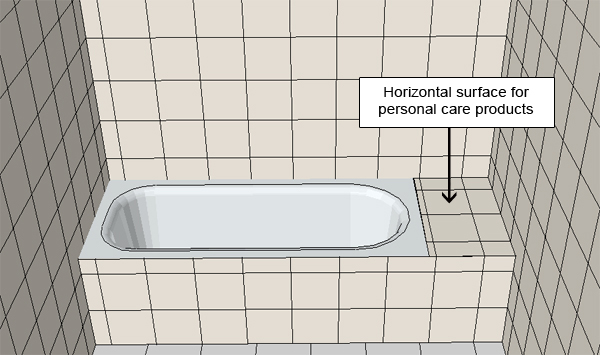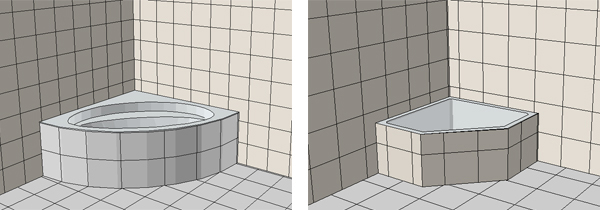Tubes can be categorized by the method used to install them. The three basic installation types are attatched-apron, deck-mounted and freestanding. There are many different shapes of bathtubs and a range of materials to choose from, such as acrylic, cast iron, steel and wood.
- The rectangular bathtub
Rectangular tubes are the most common shape. The rectangular tub is usually placed in contact with two or three walls. The free sides are covered with tiles or other material such as wood panels. The most popular material for the manufacturing of rectangular bathtubs is acrylic, since this is a lightweight yet very strong material. Moreover acrylic can be easily moulded into the required shape, even into extremely curved details.
Rectangular bathtubs come in a wide range of widths, lengths, depths, and colors in addition to the traditional 30" x 60" X 14" white version. Sizes vary from very short tubs of 1 meter long that are recommended for small bathrooms up to 1.70 or 1.80 meters long. The standard width of a tub is 0.70 or 0.75 meters.
An appropriate size for two people to share is a tube of 1.80 X 0.75 meters or 1.80 X 0.80 meters. In most case there is a side ledge, suitable for the storage of several personal care products (shampoo, soap, sponge, etc).

- The freestanding bathtub
Freestanding tubes are available either in modern styles or in the traditionsl claw-foot design. The freestanding bathtub is not necessarily attached to any wall. In contrast it is usually placed in a prominent and place of the bathroom.
Is also stands on a set of stylish feet. The most typical material is enameled cast iron. Iron retains heat well though is a heavy material. Lately acrylic has become a popular material for freestanding bathtubs.
The design of freestanding bathtubs is normally eye-catching so you should carefully choose those taps, waste pipes, etc that match perfectly the design and style of the tub. In other words, the plumbing is exposed and thus should have an attractive finish.
- Triangular tubs or corner tubs
They fit into corners, to help open up small bathrooms. Usually, a triangular tub has the shape of a quarter-circle. Corner tubs are available for left or right corner to suit to each bathroom design.

- Oval, round or hourglass shapes
This type of tubes, make a unique design statement but offer little by way of practical advantage.
| < Prev | Next > |
|---|




